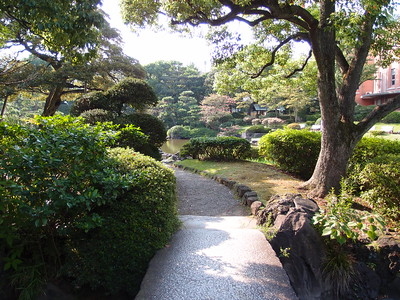Welcome! Here you can find out any information related to the parks of Japan.
Across Japan, you will find cultural heritage high rated by international standards. See industry-leading architecture and design, and enjoy the beauty of the changing seasons, from magnificent gardens to department stores and cuisine. Leave the towns and cities behind, and discover hot spring hamlets in the mountains, white sandy beaches and an array of adventure activities.

Discover the flowering meadows, waterfalls, and majestic peaks of the Northern Japanese Alps in the summertime on a fixed-route one-day bus tour. The route takes you to two of the most popular sightseeing spots in the Northern Alps—Shinhotaka and Kamikochi. Sit back and relax as you comfortably traverse the rugged landscape with a guide on hand to explain the region’s natural wonders. Tickets for the Shinhotaka Ropeway, which offers panoramic views of the Hida Mountains, and lunch at Hirayu Onsen Hot Springs, are included in the tour.

Osaka and Kyoto are bustling cities full of entertainment and adventure. Both offer convenient access to popular outdoor destinations and national parks. Take a side trip from Osaka or Kyoto to enjoy scenic views and fresh-air fun at one of three beautiful national parks. Explore rugged coastlines, dramatic basalt caves, hidden hot-spring hamlets, island-dotted seascapes, and sacred pilgrimage routes. The San’inkaigan, Setonaikai, and Yoshino-Kumano National Parks embody the diverse beauty of the Japanese archipelago. Experience the parks and their distinctive landscapes year-round through activities such as hiking, paragliding, forest bathing, snorkeling, and fat-bike dune rides.
Japan established its first kōen (公園) or public parks in 1873 (Asakusa Park, Asukayama Park, Fukagawa Park, Shiba Park, and Ueno Park). In 1911 local citizens petitioned that the shrines and forests of Nikkō be placed under public protection. In 1929 the National Parks Association was formed. In 1931 the first National Parks Law (国立公園法) was passed. After much study and survey, in March 1934 the first parks were established — Setonaikai, Unzen and Kirishima — with five more in December and a further four two years later. Three further parks were established under the old National Parks Law, in colonial Taiwan in 1937: the Tatun National Park (the smallest in Japan); Tsugitaka-Taroko National Park, (the largest); and Niitaka-Arisan National Park (with the highest mountain in then Japan).